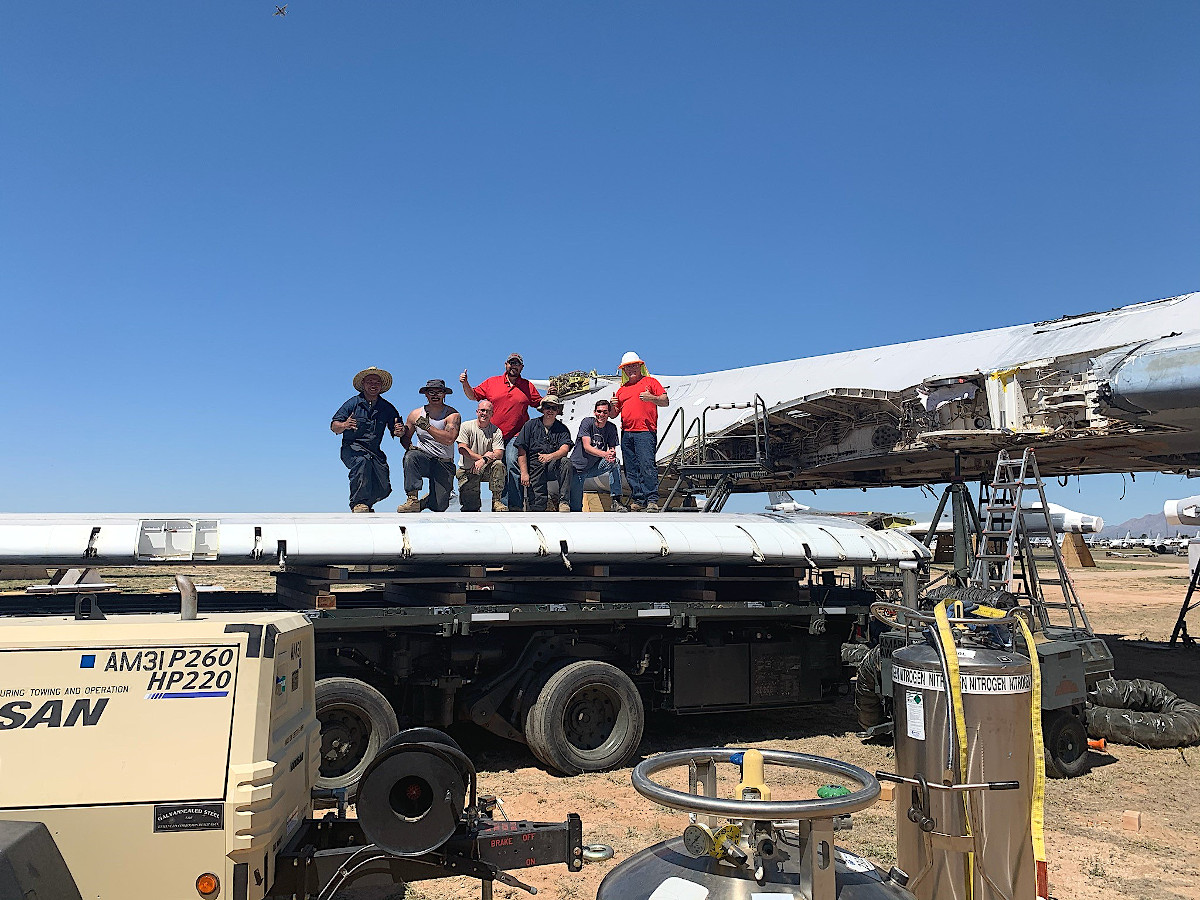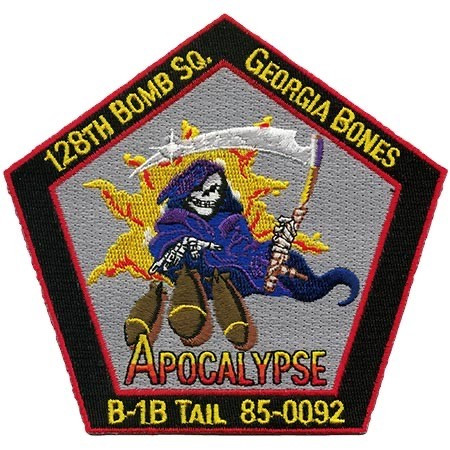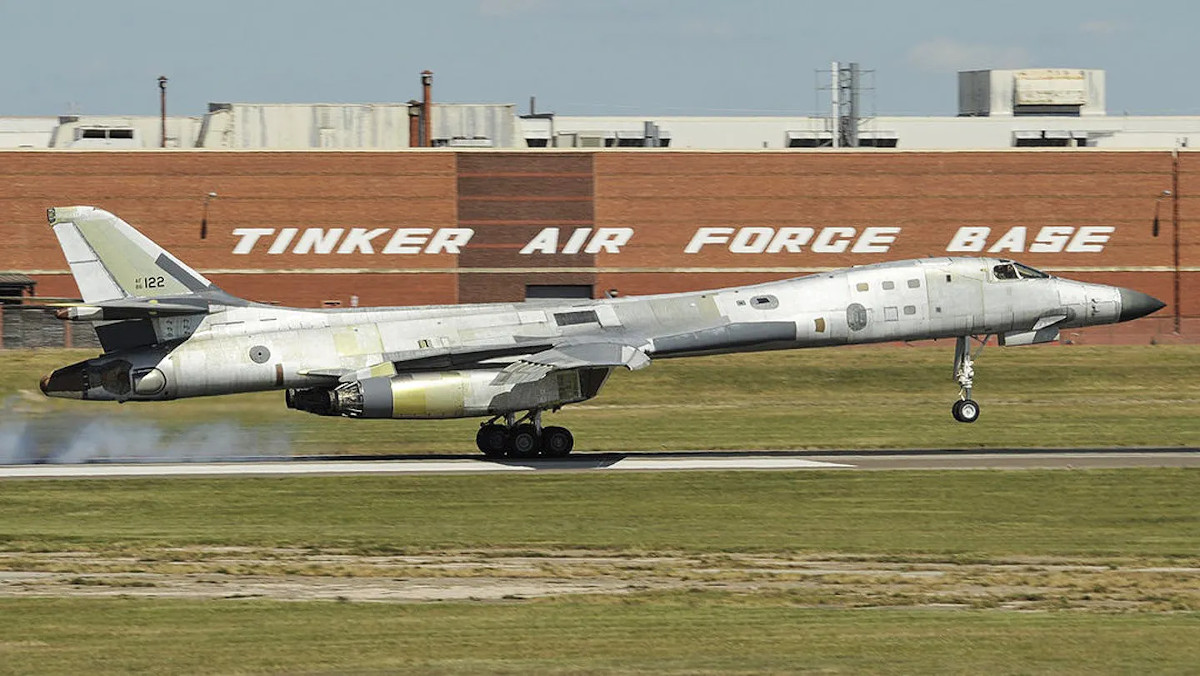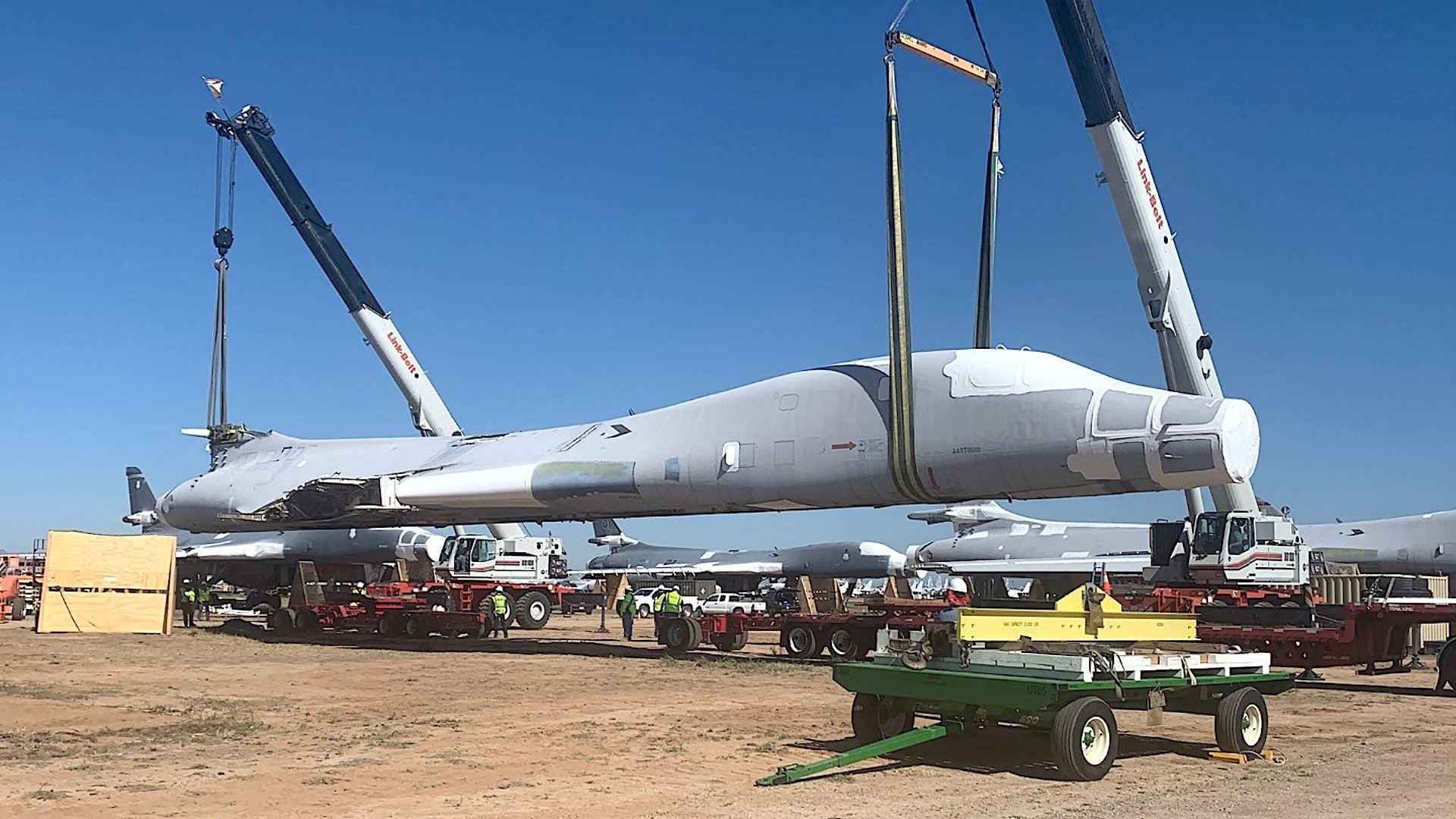The U.S. Air Force is sending the hulk of a B-1B Bone bomber from the boneyard at Davis-Monthan Air Force Base in Arizona to the National Institute for Aviation Research at Wichita State University in Kansas. Researchers there will 3D scan the entire airframe to create a highly detailed “digital twin” model to help identify areas of the aircraft that suffer high levels of fatigue and otherwise collect data that could help predict future maintenance needs among the B-1Bs still in service.
Structural fatigue, in particular, has long plagued the Bones and has become an increasingly more acute issue after years of heavy use in combat, leading now to serious restrictions on how and how much the bombers can fly during both training and actual operations. This is something The War Zone was first to report on in detail earlier this year.
The Air Force Life Cycle Management Center (AFLCMC) announced on Apr. 23, 2020, that the remains of the retired B-1B, identified by the serial number 85-0092, were headed to the National Institute for Aviation Research (NIAR) by truck. It took a month to remove the tail and horizontal and vertical stabilizers from the rest of the airframe. Air Force personnel then loaded the 130-foot long fuselage onto a pair trailers in preparation for the 1,000-mile journey from Arizona to Kansas. Separate trailers carried the tail and stabilizers. The U.S. military already routinely works with NIAR to conduct stress testing of various aircraft.

“We are taking a real aircraft from the Boneyard, and it will fly again in a digital format,” Air Force Lieutenant Colonel Joseph Lay, the service’s B-1 Program Manager, said in a statement. The service reportedly picked 85-0092 because it had flown a particularly high number of flight hours beyond its planned service life before its retirement nearly in 2002.
This particular B-1B, which had carried the nickname “Apocalypse,” last served with the 128th Bomb Squadron at Robins Air Force Base. That squadron, part of the Georgia Air National Guard, gave up all of its bombers in 2002 and subsequently transformed into the 128th Airborne Command and Control Squadron flying the E-8C Joint Surveillance Target Attack Radar System (JSTARS) aircraft.

Once the B-1B arrives at NIAR, researchers will 3D scan each part, “down to the nuts and bolts,” to create a highly detailed virtual model that they can reassemble and disassemble at will on a computer. This kind of scanning is already in increasing use in aircraft production and maintenance, as well as other commercial manufacturing industries, to help identify faults and for other quality control purposes. “Through the scanning process, we will discover all the places that saw structural failure or damage. It will create a living medical record for the B-1,” Lieutenant Colonel explained.
“Then we will be able to apply data from aircraft in the field to help us predict areas that are more likely to have structural issues,” he continued. “This living virtual model of the B-1’s structure will be superimposed with layers of maintenance data, test/inspection results, and analysis tools, which can be integrated over the aircraft’s life cycle.”
The video below shows a demonstration of 3D scanning of an airframe for maintenance purposes.

This information will be extremely valuable for ensuring the readiness of the Air Force’s remaining B-1Bs, which are now entering the twilight of their service. These bombers have been a go-to choice for combatant commanders in the Middle East and Afghanistan, especially, since the very beginning of the Global War on Terror, an operational history you can read about in more detail in this past War Zone piece. They have also routinely conducted power-projection-type missions, especially in the Pacific region. One of the Bones just performed a 30-hour-long sortie from Ellsworth Air Force Base in South Dakota to Japan and back again this week.
These near-constant operations have all taken a toll on the 60 B-1Bs that are still in service, with the highest time airframes having flown more than 12,000 flight hours since they entered service in the 1980s. In August 2019, it emerged that only six of them were mission capable, though the Air Force has since significantly improved the fleet’s readiness rate since then. The service now wants to retire 17 of the bombers in the coming year, while it also looks to expand the capabilities of the remaining aircraft, including adding new hypersonic weapons to their arsenal.
The Air Force also says the virtual modeling with help with rapid prototyping of new replacement parts. “We have never had the ability to prototype a repair part,” according to Lieutenant Colonel Joseph Lay.

“With this, we will be able to design a part and fit-test it in the digital world before we manufacture the real thing. The ability to do a virtual fit check could be very beneficial,” he added. “You would even be able to put on some goggles and take a virtual walk through the airplane, see how parts fit together and interact with each other without ever having to leave the office or your telework environment. We expect to learn a lot about this platform.”
Needless to say, the Air Force’s entire experience with the virtual model of 85-0092 could have wider applications across the service when it comes to maintenance procedures and upgrading aircraft. Will Roper, the Assistant Secretary of the Air Force for Acquisition, Technology, and Logistics, has been a particularly outspoken advocate for the increased use of “digital engineering,” including highly accurate computer modeling and simulation, to reduce acquisition and operating costs across the service. These concepts are core components of Roper’s questionably ambitious plans for the rapid development of future fighter jets.
Many of these technologies are already increasingly being used by aircraft manufacturers. Lockheed Martin, through its Skunk Works advanced design bureau, has been a notable pioneer in the use of modeling and simulation. Northrop Grumman is also employing digital engineering technologies in its advanced aircraft projects, including the B-21 Raider stealth bomber program, and 3D scanning in its production lines, as well.
All told, almost 20 years after it went to the boneyard, and now a shell of its former self, 85-0092 looks to set to provide a new and valuable service to both its cousins that remain flying and the Air Force as a whole.
Contact the author: joe@thedrive.com
